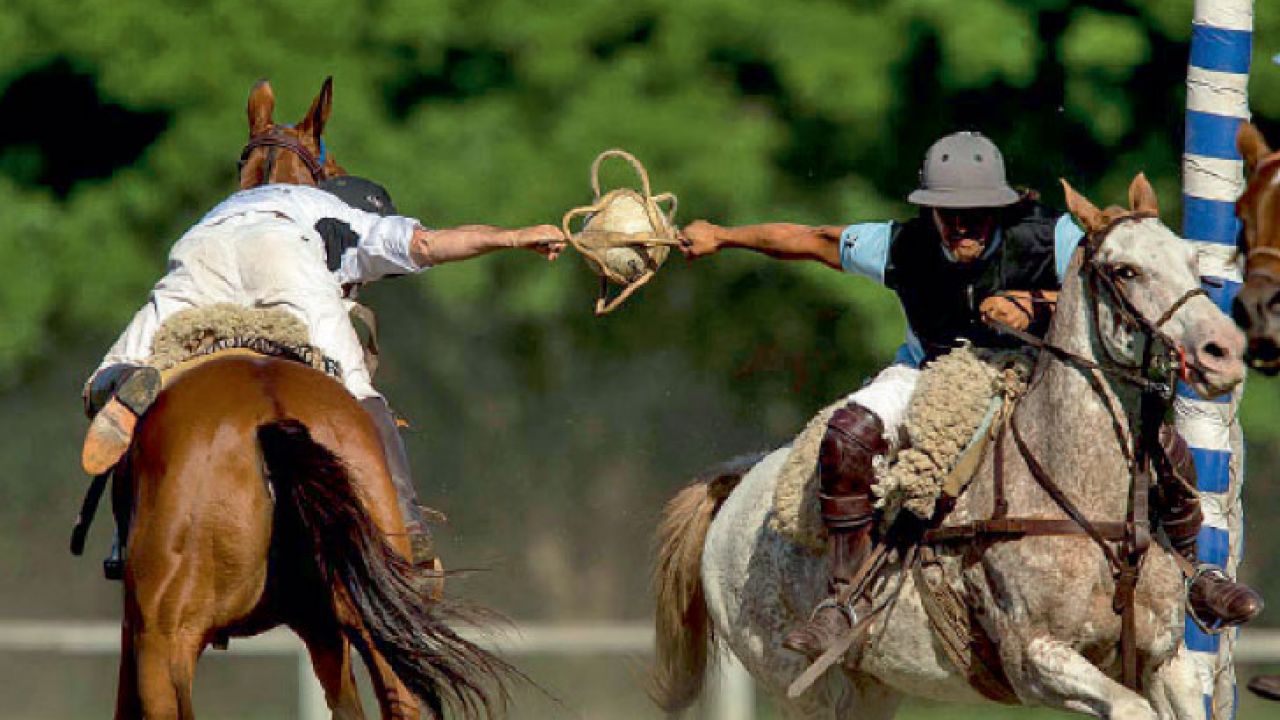
Pato (Argentina)
- Name of sport (game): Pato / Horseball
- Name in native language: Pato / Horseball
- Place of practice (continent, state, nation):
Pato - Argentina
Horseball - France, Spain, Belgium, Brazil, United States, Portugal, and other countries - History:
This sport was created in the 17th century as a form of neighbors' play or rather rivalry between farms. It was also gauchos’ entertainment. The number of players was also not limited. "Pato" means duck, because ducks were used instead of balls. The player was to take the basket with that duck to the area of the own farm, and the only rule was that the competitor would hold the duck in his outstretched hand. Sometimes the duck was in a leather bag with four handles. The place of the competition was usually a field, often not of specific sizes, sometimes even of several square kilometers. The game area was sometimes the distance between neighboring farms (ranches). The first team that reached their own casco (rancho house) with a duck was considered the winner.
The sport was brutal, bloody and dangerous, which led to frequent injuries. Besides, not only during the game players were wounded, but often also in fights with the use of knives, after the end of the game.
The first versions of the rules of the game were created in 1610. In the same year, a document prepared by military anthropologist Félix de Azara described a Pato scene in Buenos Aires during the beatification ceremony of San Ignacio de Loyola: "Two teams of men on horseback get together and two far away destinations are indicated. Later on, they sew the leather where a live duck sticking its head out has been placed. This leather is made up of two or more handles from which the two strongest men in each team hold on to half way between the destinations that have been signaled. Enthusiastically, they pull strongly until the strongest team grabs the duck and carries it with them, thus making their rival fall down onto the floor if they do not let the duck go. The winning team starts running and the opponents race after them and surround them until reaching them through one of the handles. They pull strongly once again, and the team that manages to carry the duck to the stated destination wins" (all quotes come from the source: http://archive.li/z8PdQ and the site of the Argentinian Pato Federation).
On June 16th, 1610, Jesuit Diego de Torres Bello S.J. wrote the first letter to his superiors, saying that in every city in Rio de la Plata were religious, social and cultural events, beatification of the founder of the Society of Jesus, Saint Ignacy de Loyola. And in Buenos Aires (Bs As.) "Artillery and musketeers have done their job, and some have left with pride to play ducks in front of our church." "Two groups of riders chased ducks in front of our church (it was in the middle of the present Plaza de Mayo)" Everyone was full of admiration, seeing them and horses that seemed tireless ".On April 4th, 1611, a second letter was sent. Much attention is paid to the fact that the participants were two Indian tribes, and that the Spanish, quite logically, did not give them horses as these animals were one of their main weapons during conquest and war. He states, however, that "Cordova's parents encouraged Indians in the Calchaquí Valley to be rewarded so that they could throw arrows and run with ducks." The locals of Kalchiqués defeated Huachipas visitors. This letter does not describe the game and its development, but suggests that during the game alive ducks were used (Copies of the letters are in the "Del Salvador" school.)
Neither the Spanish introduced this sport nor did the Indians practice it. First, it was an unknown sport in those days and it does not come from the natural inhabitants of this region of the world, because they did not know horse that was imported by the Spanish in the first half of the sixteenth century. It seems to be a Creole game, developed and planned by the conquerors themselves or their direct descendants.
Don Pedro de Mendoza was the one who introduced horse to these lands in 1536, although the herds were the descendants of a few horses (about five mares and seven stallions) that Don Irala abandoned after leaving Buenos Aires in 1541. Their number increased significantly when other horses were brought by Cabeza de Vaca, in 1542 by Diego de Rojas and in 1550 by Nuñez del Prado.Around 1581, Juan de Garay estimated the number of wild horses on 80,000 animals in a circuit of 30 miles from Buenos Aires. Fourteen years later, 1595, when the king asked the Governor of Rio de la Plata, Valdés de la Banda, for the horses that lived in "La Pampa", he replied: "I say that Don Pedro Mendoza, who was the first inhabitant of this city and port, brought here horses and mares that remained abandoned on this land, which is very wide and long." The flocks are seen from afar and are so numerous, that they outnumber the enormous numbers which historians talk about – horses that the kings of Persia possessed ... " No doubt it was probably an exaggerated message. But that explains the origin of horses, the number of which has changed the way of life of all indigenous people and those who came after them.
A century later, a French military engineer specializing in the fortifications of Amadeo Frezier (1682–1773, who for more than two years sailed through the "Southern Sea", referred to a scene similar to that described by Félix de Azar.) The scene from 1712 was described in the book published in 1716: "I was a witness of the party when the Spanish commissioners, both called Pedro, were celebrating in a village located in Talcahuano, near the one we lived in. After listening to the mass, they rode horses to chase hens, just like goose in France, with the exception of the following differences: all fell on the player who managed to get the head of the hen to take it away from him and display to the others, in the honor of which the party was given. During the gallop they fell into each other to take away the head of the hen, and while running they lifted everything they threw on the road, and after that race they got off to lunch. "
The game was for the first time banned in the city of Santiago del Estero on February 23rd, 1739. The reason was that "it is crazy to play Pato in the middle of the city." Reverend Salbaire, an author of "History of Our Lady of Luján," in a document from 1796 mentioned a parish priest Gabriel José Maqueda, who admonishes and orders parishioners to refrain from playing Pato, connecting this with the excommunication "if they do not do this".
Also in these years, the parish priest of Luján announced that those who played the game would be at risk of excommunication. The Catholic Church did not accept this form of entertainment from 1796, threatening to deny the burial of Pato players. Eventually, the game was banned in 1790 (some claim that in 1796 or 1822), due to the numerous deaths during the games.
But the official ban was when the Governor of Buenos Aires, General Martín Rodríguez, adopted a decree with effect of the law on June 21st, 1822 (approved by his minister of government, Don Bernardino Rivadavia), which stated that playing in Pato was definitely forbidden. Rodríguez's decree predicted that "the punishment for anyone who plays the game for the first time will be hard labor lasting one month, and the penalty will be doubled if he is caught playing Pato for the second time. What's more, people who will be caught playing Pato for the third time, they will have to face six-month hard labor period and will be punished for the damages they may cause. " Pato was therefore banned, but this did not stop the practice of this sport, even if the ban was continued by the government of Juan Manuel de Rosas.
It was said that the interest in sport was reborn in 1852 thanks to the excellent description of the Pato in the book "A soldier's portfolio" by General José Ignacio Garmendia.
In various writings from the 18th century, numerous references to this sport appear, especially about its dangerous character and tragic consequences. Argentine novelist Guillermo Enrique Hudson (1841–1922) in his book "The Ombu" states that "El Pato" was the most popular entertainment practiced in Argentina. In the book there is a chapter entitled "The Old English Invasions and the game" PATO ", in which it refers to the danger that characterized it.
In 1854, Bartolomé Miter referred to this sport in one of his own and said: "It is no longer a habit to play Pato, this sport is now a memory of the past." Because the game was strictly forbidden because of the personal disasters that caused it, people gradually stopped playing, without forgetting it completely. "Miter wrote" Odes" during the siege of Montevideo when he was 18-20 years old and released them at the age of 33 in 1854. In his text entitled "El Pato" he wrote: "Game “Pato" no longer exists in our habits, it is already a distant memory. Strictly forbidden by personal misfortunes, which gave cause for people to leave it slowly, without forgetting it completely. " In one of his poems, Miter wrote:
“Pato”! Strong game
of the man from “La Pampa”
that marks customs
of manly people!
To spur nerves
to build muscles
as the young convulsive
in feverish pain."El Pato" was definitely the most popular outdoor entertainment in the Argentine Republic. Writer José de Espinoza says that in "Pato" play a group of "naughty" men. All are excellent riders, one of them holds on the bent arm a leather bag with rings. At a given sign they start to rush, everybody is chasing "Pato" and fighting to pick up the prey. The one who succeeds, and the others will not take his gains, is really skillful.
In "Pampa Argentina" Roberto Torreiro wrote "while in the 20th century no one remembered the existence of the game" Pato ", on April 16th, 1937, at the initiative of the then head of protection of the city of La Plata Don Alberto del Castillo Posse and at the same time the admirer of the Argentine tradition, supported by a qualified group of athletes, an exhibition was organized of this sport. Due to the stirring enthusiasm among those present, Posse decided to promote the "Pato", seeking to build teams associated with horse sports and encouraging the establishment of organizations that were originally involved in its promotion. This step was the first success regarding the national sport. " Alberto Castillo Posse developed the rules of the game, inspired by the rules of the polo game (using a leather ball with four handles), and the first competition took place on March 31st, 1938. The Minister of the Government of Buenos Aires, Don Roberto Noble, asked to repeal Regulation no. 1043 police in Buenos Aires (1889), which banned the game. The Governor, Manuel A. Fresco, agreed and issued a decree on April 28th, 1938, justifying that "sport is subject to disciplinary rules, and that Pato, in its current form, is considered a healthy and energetic sport, similar to polo."
On August 23rd, 1938, the newspaper "La Nación" commented on the public show "Pato", which took place the previous day in the field of the Ameghino Association, near the "Cabildante Léxica" bridge, in the city of Luján. The show was attended by the Governor of Buenos Aires, Manuel Fresco, who was the chairman of the Chamber of Deputies of Nationalities, Juan G. Kaiser and the Ministere of Public Works, José María Bustillo and many other special guests.
Already three years later, the Argentine Pato Federation – F.A.P. (Federación Argentina de Pato) was created. In August, 1943, the Police Commissioner, Sigfrido J. Imaz, came to Las Heras, engaging in the promotion of the Pato. On November 28th, 1943, an organization called "Campo de Pato General Las Heras" was established, whose aim was "to be, is and will be to promote the game" of Pato and cultivate the traditions of Argentina. Its boss was Imaz. In 1944, "Campo de Pato General Las Heras" joined Federation Argentina de Pato, and the region was recognized as "capital of Pato".
The goal of F.A.P. is to promote Pato, manage the tournaments, organize tournaments, watch over compliance, but also promote breeding horses, which are best suited for practicing Pato.
Presidents of the Federacion Argentina de Pato (F.A.P):
• Mr. Alberto del Castillo Posse 1941/1942
• Mr. Manuel Andrada 1942/1945
• Dr. Eduardo Ortíz 1945/1946
• Col. Paz R. Alberto 1946/1948
• Col. Julio Moreno 1948/1949
• Col. Paz R. Alberto 1949/1953
• Cte. Samuel M. Zamora 1953/1955
• Mr. Raúl Alberto Píccoli 1955/1956
• Col. Paz R. Alberto 1956/1957
• Mr. José R. Sánchez Sañudo 1957/1959
• Mr. Guillermo Micheo 1959/1961
• Mr. Rogelio Cambiasso 1961/1963
• Esc. Julio Ricardo Moreno 1963/1965
• Mr. Raúl Alberto Píccoli 1965/1968
• Dr. Carlos Fausto Portela 1968/1971
• Esc. Julio Ricardo Moreno 1971/1973
• Mr. Jorge Celestino Garros 1973/1977
• Dr. Rodolfo Julio Ortiz 1977/1984
• Mr. Rubén Dario Gagliardi 1984/1996
• Mr. Jorge Pini 1996/1999
• Dr. Rodolfo Julio Ortiz 1999/2001
• Mr. Daniel Gabrielli 2001/2007
• Mr. Ricardo José Fernández 2007/2013
• Mr. Patricio Ezequiel Jaccoud (present)An important date is September 16th, 1953, when the President of Argentina, Juan Domingo Perón, declared Pato a national sport (Decree 17468 of 9/16/1953 decrees that the national sport "El Pato," as developed from an old game engaged in by the Argentinean in origin, Boletin Oficial de la Republica Argentina, 25/09/1953). On this occasion, demonstration tournaments were organized with Brazil and the United States. However, the status of Pato, as a national sport in Argentina has been questioned by the football federation. Because a large part of the Argentine society is passionate about football, many Argentines have never even seen a Pato match. In 2010, a bill was introduced to raise football to the status of national sport and recognize Pato as a traditional sport. Defenders of official Pato status indicate that it is a traditional, national game, while football was imported from England.
The consequence of the popularity of Pato was the formation of Horseball, which is actually a very similar sport. The International Horseball Federation (IHF) is responsible for its development, organizing international competitions, world championships etc. It is interesting that the first European Championship (played in 1992) is an older event than the world championships. Horseball is very popular in France and Spain. This is one of ten disciplines officially played by the International Federation for Equestrian Sports (FEI – Fédération Équestre Internationale).
In the 1930s, thanks to Captain Clave (the world champion in show jumping over these years), Argentina Pato appeared in France. Quickly this sport started to be called "Pato indoor" due to the need to limit the playing field. In 1936, Captain Clave modified the rules, which were so significant that he decided to give this rivalry a different name: Pato was changed to Horseball. The changes in the rules were a consequence of adapting the Pato to the European conditions and the possibilities of European horses. At that time, Horseball was not considered a sport, but only as a form of fun or game. It quickly gained great popularity, especially among the military, who organized matches between regiments. Sport disappeared with the start of World War II. It was treated only as an exercise for improving saddle riding in several clubs.
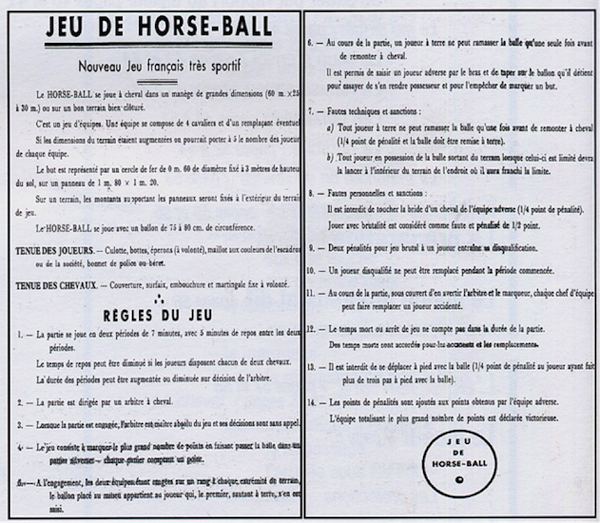
One of the first "jeu de horseball" regulations.Perhaps that is why today Horseball is especially popular in France. In the 1970s Fédération Française d'Équitation, led by Christian Legrez, decided to introduce innovative elements in the field of equestrian training by introducing elements of sport competition.
Pato in the hall version was practiced in Provence and Val de Loire thanks to two people: Pascal Marry and Jean-Claude Gast. Thanks to their involvement in the work of the Commission des Jeunes et des Jeux, the first match was organized during Salon du Cheval in 1977.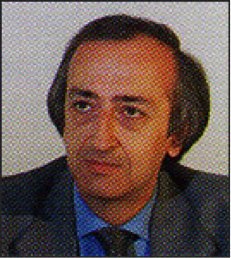
Jean Claude Gast
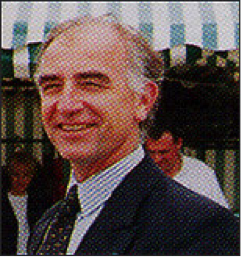
Pascal MarryIn November 1978 a seminar was organized at l'École Nationale d'Equitation in Saumur on the role of equestrian sports. It was an important meeting because it was attended by people essential to this sport: Philippe Thiebaut and Jean-Paul Depons. The first one was because he tried to specify the rules of the game, the second discovered riding exercises in the saddle called "horse ball" by Capitaine Clave in the equestrian center Yvelines. After finishing the training, he settled in his hometown Castillon la Bataille.
In February 1979, the first championship in Jeux Equestres in Poitiers took place. The Horseball name did not work yet, but the first attempt with the Pato in the hall version was made. The rules for these competitions were a compromise between Argentinian Pato and Capitaine Clave’s Horseball exercise. The finals included the Bordeaux and d'Henin Beaumont teams. Philippe Thiebaut and Jean-Paul Depons were the first referees of this competition. After the competition finals, they decided to work in clubs – Philippe Thiebaut played in the team from Salon de Provence, and Jean-Paul Depons began training the team from Bordeaux.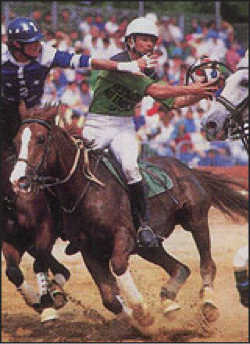
Philippe Thiebaut in the colors of the Salon de Provence clubAfter the French championship in 1979, Jean Speetjens created in Belgium the first Horseball federation - la Fédération Belge de Horse-Ball (FeBeHob).
The second French championship competition took place in October 1979. As a result of the meeting at Castillon la Bataille, the sport received the name Horseball and the final regulations were adopted. At the end of 1980, the role of Horseball in the framework of the Commission des Jeunes et des Jeux grew bigger, hence the decision to establish a new committee that would take up this sport. Its first chairman was Jean-Paul Depons.
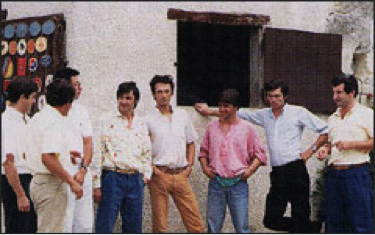
Members of the first Horseball Committee (from left to right): Bernard Depons, Dominique Brugier, Philippe Karoubi, Patrice Cottin, Philippe Thiebaut, Claude Michelet, Yves Verrier and Jean-Paul Depons.Horseball appeared on the international arena in 1988 thanks to the French team's shows in Portugal and England. The first international meeting took place in 1989 between the teams of France and Belgium (two French victories). In 1992, during the Salon du Cheval, the first European Horseball Championship took place, and Philippe Thiebaut became the first coach of the national team of France, under which the French team won eight titles of the European Champion in 1992–1999 (in 1997 there were no championships).
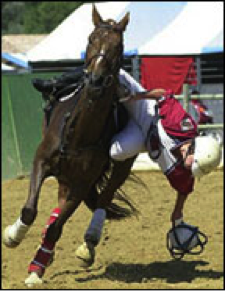
Laurence Ricou in the colors of the ChamblyThe Argentine Pato Federation and the International Horse-Ball Federation in 2006 agreed to change the Horseball rules in order to adapt them to the current Pato regulations. That is why this sport finally became known as "Pato-Horseball". Also that year, the first Pato-Horseball tournament took place at the Buenos Aires trade fair, where Portugal won first place, and Argentina took second place. In addition to the above-mentioned countries, the competition was also attended by the representations of other countries: Austria, Germany, France, Italy, Spain, England, USA, Canada and Brazil.
The first match of the Polish national team in Horseball took place in December 2012 during the Poznan Cavaliada. The rivalry with the Austrians ended in a draw. Although the Polish were in the lead for all this time, in the last minute more experienced players from Austria scored an even point.
- Description:
The Pato field must be perfectly horizontal, covered with grass. Sizes of the playing field: length 180-220 meters (196.9 to 240.6 yd), width 80-90 meters (87 to 98 yd).
A special ball for Pato, made of leather, is actually a volleyball or football ball, which is inserted in a special leather "harness" with six handles. The ball weighs from 1050 grams to 1250 grams (2.3 to 2.8 pounds) and is about 40 centimeters in diameter (15.7 inches).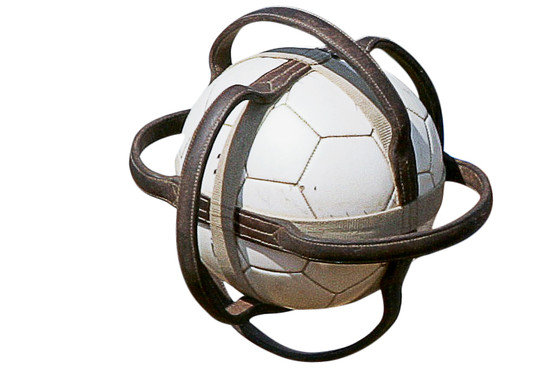
Pato ball
The teams consist of 4 players (and 2 substitutes), and the whole match has 6 rounds of 8 minutes, where breaks last 4 minutes and are needed in order to change horses. There are 2 referees on the field and one outside the playing field. The winner is the team with the most goals scored after the regular time.
The target of the game is to throw the ball into the basket placed vertically (just like in basketball, but the basket is horizontal in basketball). At the ends of the field there are iron hoops (meter diameter) located about 2.5 meters above the ground. There is a net on the hoops. The hoops have a diameter of 100 cm (3.3 feet) and are located on tall columns 240 cm high (7.9 feet). The net is closed, extending to 140 cm (4.6 feet), in which the ball remains after scoring the goal.
The ball from the ground is collected by the players, who lean out of the saddle and grab it by one of the handles. This must be done in motion, and the competitor must remain in the saddle (so that the saddle does not slip, it is covered with sheep's fur). The player should not stop. It is forbidden to drive the opponent of the road, but you can push the horse to the side.
A player with a ball must hold it in his right hand. Not reaching the hand while riding with Pato is unacceptable and is called negada (refusal). If the opponent grabs the ball, the fight for it begins, until one of the players releases it. They both must stand in the stirrups. When towing a ball or cinchada both players must stand on stirrups and avoid sitting in the saddle, and a hand not engaged in pulling must hold the reins. This fight cannot last longer than 12 seconds.
The best horses for Pato are Arabian horses, quarter-horse, and especially criollo, which have shorter legs (they are descendants of Spanish horses of conquistadors).Horseball is a sport very similar to Pato. It is the most team-oriented of all equestrian sports. Team spirit is the most important feature of this sport. This sport is also characterized by respect for the opponent and care for the welfare of horses participating in the competition. Since 1979, the competition has been carried out according to strictly defined regulations. There are also strict security rules, not only for players, but also for competition organizers. Children, youth and adults can participate in Horseball competition, there are female, male and mixed teams.
The duration of the match is 25 minutes or two halves of 10 minutes (the duration of the each of the halves of the match depends on the age category). There is also one 3-minute break. Each team captain has the right to ask for a 30-second break in each part of the match.
It's played outside or in the hall. The field (called "rug" – even if the name is not commonly used) has the sizes 60 (75) m x 20 (25) m., excluding the safety zone. The field is usually covered with sand, not slippery, with the shape of a rectangle. The playing field consists of a game area, safety zones, a place where baskets and a technical area are set. The short sides of the playing field are impassable. On the sides of the long part there are places for changing players, positioned so that a quick change is possible. Short sides must be limited by a palisade or a protection zone with a minimum height of 1.60 m. Two gates are located on short sides at a height of 3.5 m.
On the long side, the playing area is limited by inflatable "rollers".
The flags or signs must indicate: the center line (adequate to half of the field) and the penalty lines (5 m, 10 m and 15 m).
On each side there is a belt with a width of min. 5 meters reserved for alternates, trainers and teams. Barriers should separate this space from viewers.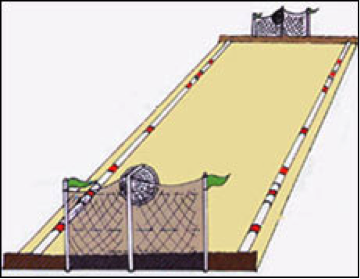
Horseball fieldBaskets consist of a metal circle with a white inner diameter of 1 m and a thickness of 6 cm and equipped with white net (net 4 cm). The base must be 3.5 m above the ground and 2.5 m from the edge of the field in the middle, on the short sides.
The protective net is placed behind each basket to prevent the ball from falling out of the playing field. It extends at least 5 m on both sides of the basket and up to a height of 4.50 m. The baskets can either be hung on stands or suspended on jibs (perpendicular, not parallel to the ground as in basketball). Under no circumstances the support legs should be in the playing area.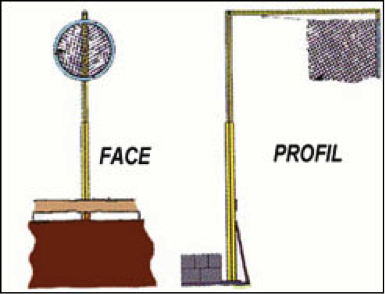
Horseball basketTwo teams consisting of four players each (and two substitutes) take part in the match. There are two referees: one on a horse, the other on a special platform at the side line in the middle of the field. The match is watched by the referee-observer. The referees are equipped with communicators.
In a visible place, usually behind the referee sitting at the midline, there should be a scoreboard showing the current result, time and penalties. The position of information board should enable competitors and viewers to follow the displayed information on the result and time.Before each match, players’ horses should undergo a veterinary control. Horses can participate only in one game a day.
The ball is leather with six handles. Weight and size of the ball depend on the age of the players:
- Moustique / Poussin category: size 2, perimeter 47 cm, weight 400/500 g, handle length 30 cm
- Benjamin / Minime category: size 3, perimeter 60 cm, weight 500/600 g, handle length 39 cm
- Category Cadet / Junior / Sénior: size 4, perimeter 65 cm, weight 600/700 g, handle length 41 cm
Horseball ballsHorse equipment:
- bit and bit mouthpiece – such that there is no risk of injury to the animal (biting bit is prohibited)
- martingale – fixed or flexible is required in all categories, except for category A’s ponies
Horses must be equipped with protectors on each leg.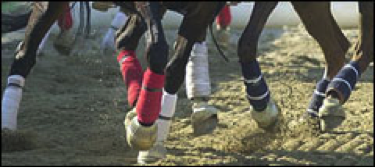
The girth is a necessary element of the horse's equipment, it can be made of fabric or leather. The girth must pass through the martingale.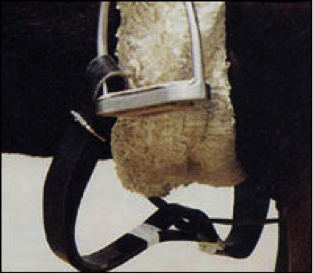
Rider equipment:
- Outfit
All team members must have identical shirts, numbered on the chest (fig. 10 cm) and on the back (fig. 20 cm). Black and white shirts in vertical 5 cm stripes are reserved for referees. The rest of the outfit must be pants or jumpsuit (identical color for competitors of the same team) and riding boots. Players cannot wear jewelry (bracelets, watches, necklaces, etc.). Only one trainer per team and one doctor per horse can stay in the safety zone, all of them must wear the right outfit in the colors of their team.
- HelmetWearing a 3-point "beard" or "chin" helmet is mandatory. It is forbidden to use check patterns on the helmet.

- Protection
It is recommended to fit knee pads and / or back protectors.
- Pasterns, whip
They are optional, pasterns with wheels and dangerous are forbidden. Only pasterns with rounded ends with a maximum length of 3 cm are allowed. They must be placed in a place at normal height and simply held by the belt.
Wearing a whip is prohibited, except for the categories Moustique and Poussin. Whip is allowed in the warm-up field.At the beginning of the game, the ball is placed on the 10-meter line, on the side of the team that starts the game. After the referee's whistle, one of the players takes the ball in a gallop, and the defender (the opposing team) must be on their side of the court.
The team that defends may try to take the ball from the opponent's hands or push them out of the playing field. During a direct "clash", players must sit in their saddles – and the one who does not do so, receives a penalty. Any player can take the ball that hits the ground, but must move in the direction of the attack when the ball was released – it is about minimizing the risk of players colliding.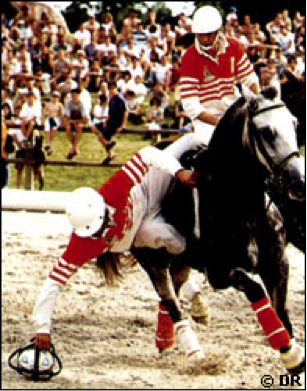
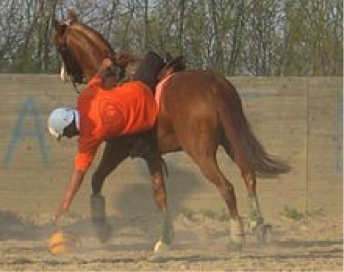
Taking the ballWhen the player takes the ball, the horse must gallop (trot in case of juniors under 13). They must not stop, because such maneuver is dangerous for the horse as it has a bad effect on his body.
As a rule, before scoring a goal, at least 3 passing of the ball must be made between 3 different players of the team. The point is to give more dynamic competition. The player has the right to hold the ball for no more than 10 seconds.
Connection is very common during the match, and riders encourage their horses to be energetically in contact with others to allow the rider to take the ball to the opponent or change the trajectory of the opponent's run. These maneuvers are, however, regulated (for obvious security reasons), especially in terms of impact, and an official prohibition of attacking the player during the raise of the ball when he is de facto defenseless. Only the player who is already in possession of the ball can be "attacked".
Horseball is also a sport in which, considering the small number of players, versatility is required. The only exceptions are when the ball stops and in relate to the so-called "fly" position, i.e. the player in a very high defensive position, whose aim is to stop the attack of the opposing team. Defense is usually set in the middle of the field along the playing field.
During the match, players cannot get off the horse.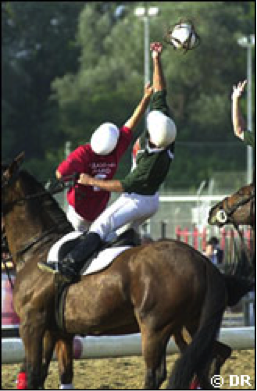
Resumption of the gameFouls are punished (from P1 to P3) – team penalty, individual penalties have white, yellow and red card.
Although it is a tight contact sport, Horseball is safe for both riders and horses. Horses run close to each other, often even at a distance of 5-10 centimeters. The game requires quick turns and sudden stopping.
Characteristic of this sport is that it often goes without holding reins, because hands must be free to catch and pass the ball to other players. The game is very spectacular because the pitch is small and the audience is close to the action. - Current status:
- sport practiced (associations, results, competitions, calendar of masters, etc.)
The Open Pato Argentinian tournament (El Torneo Abierto Argentino de Pato) took place for the first time in 1941, when the Argentinian Pato Federation – the sport governing body – was established. The first team champion was Los Corrales, a quartet composed by Argentino Fuentes, Clovizo Querol, Roberto Fuentes and Florencio Novoa.
The most successful team is Barrancas del Salado with 15 titles in 1968 and 2005.
There are several international competitions organized by the International Horse-Ball Federation: European championships, world championships and FIHB Champions League clubs.
The European Senior Championship is the oldest international tournament. The first was organized in 1992 in Paris.

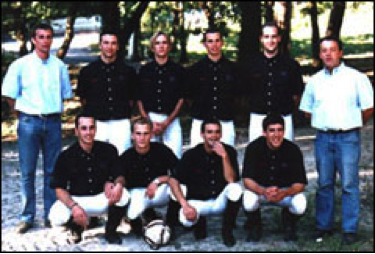
France team - European Champions from 2002
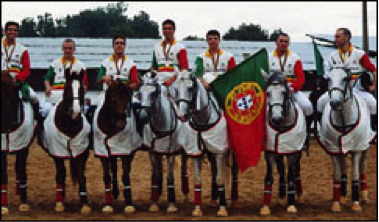
Team Portugal - third place European Championships in 2002Women's European Championships were organized for the first time in 2003 in Abano Terme 2003 (Italy).

The European Under-16 Championship is a tournament for youth with mixed teams, the first time played in 2004 in Lamotte-Beuvron 2004 (France).
The World Championships (senior mixed teams) took place twice. The first took place in Ponte de Lima in 2008. Teams playing in the championships are Argentina, Austria, Belgium, Brazil, Canada, France, Germany, Great Britain, Italy, Portugal, Spain. The second took place in 2012 in Montpellier, and the teams were from Algeria, Argentina, Belgium, France, Great Britain, Portugal, Spain.
The club tournament, organized by the International Horseball Federation, is the FIHB Chambions League. It is a rivalry between the leading clubs from the four highest ranking European countries. The first tournament was played in 2007 in Stockholm, Sweden.

In 2010, the first Four Nations Cup took place in Portugal, won by the French, the second place was taken by the Portuguese and the third by the Spanish.
- Importance (for practitioners, communities etc.):
The International Horseball Federation consists of eighteen countries, including eight European countries. The Polish Horseball Association belongs to the FIHB World Federation of Horseball.
Federación Argentina de Pato y Horseball - http://pato.org.ar/deporte-nacional/
International Horseball Federation - http://www.fihb.net/
Deutscher Horseball Verband - https://horseball.de/
Horseball Portugal (Portuguese Equestrian Federation) - https://web.archive.org/web/20060424063033/http://www.horseball.pt/
Belgian horse-ball team - http://www.too-xtreme.be/
British Horseball Association - https://www.britishhorseball.co.uk/
Australian Horseball Association - https://www.australianhorseball.com.au/
Horseball Austria - https://www.horseball-austria.com/ - Contacts:
Federación Argentina de Pato y Horseball - https://www.facebook.com/pg/FAPpato/posts/

- Sources of information :
Articles:
https://noticias.perfil.com/noticias/deportes/2015-12-19-pato-la-lucha-contra-el-olvido.phtml
https://www.serargentino.com/argentina/historia/origenes-del-pato-el-deporte-nacional
https://prezi.com/lme3lykc9dwh/pato-the-sport-of-argentina/
http://www.horseballshow.com/
http://hball.tv/
http://www.lecoinduhb.fr/
http://www.horse-ball.org/horseball/origine2_en.phpVideo:
https://www.youtube.com/watch?v=bOKhK5cDsu0Source of photos used in this article and gallery:
https://www.facebook.com/FAPpato/photos/a.261647570700536/2065725793626029/
https://billiken.lat/interesante/sabias-que-el-pato-es-el-deporte-nacional-argentino/
https://turismo.buenosaires.gob.ar/en/article/4-things-understand-about-pato-argentinas-national-sport
https://noticias.perfil.com/noticias/deportes/2015-12-19-pato-la-lucha-contra-el-olvido.phtml
https://www.serargentino.com/argentina/historia/origenes-del-pato-el-deporte-nacional
https://www.perfil.com/noticias/actualidad/pato-el-deporte-nacional-busca-popularizarse-con-una-oferta-anual-de-casi-50-torneos.phtml
https://turismocero.com/comienza-la-temporada-de-primavera-del-pato-deporte-nacional/
https://elabcrural.com/el-pato-nuestro-deporte-nacional-brillo-en-palermo/
https://www.clarin.com/deportes/abierto-pato-medio-fiebre-argentina-mundial-deporte-nacional-definio-campeon_0_HsfyCXlVKf.html
https://www.espn.com.ar/otros-deportes/nota/_/id/3361907/el-pato-fue-declarado-deporte-nacional-por-ley
https://hoychivilcoy.com/2020/01/30/torneo-de-pato-del-picadero-en-el-fogon/
https://eldoce.tv/videos/deportes/por-que-el-pato-es-el-deporte-nacional_21423
https://www.discovermagazine.com/the-sciences/sports-that-people-played-in-ancient-history - Gallery:
- Documents:
 2014-WHR-NationsHistory-01.01.14.pdf
2014-WHR-NationsHistory-01.01.14.pdf CODE_DE_CONDUITE_INTERNATIONAL_-_frdocx.docx
CODE_DE_CONDUITE_INTERNATIONAL_-_frdocx.docx LES_6_FONDEMENTS_DU_HORSE_BALL_-_Charte_de_Bonne_Conduite_-_frdocx.docx
LES_6_FONDEMENTS_DU_HORSE_BALL_-_Charte_de_Bonne_Conduite_-_frdocx.docx Mistrzostwa_Francji_Pro_Élite.docx
Mistrzostwa_Francji_Pro_Élite.docx PALMARES_CHAMPIONNAT_DE_France.pdf
PALMARES_CHAMPIONNAT_DE_France.pdf REGLAMENTO_OFICIAL_DEL_JUEGO_DE_PATO.docx
REGLAMENTO_OFICIAL_DEL_JUEGO_DE_PATO.docx Zwycięzcy_El_Torneo_Abierto_Argentino_de_Pato.docx
Zwycięzcy_El_Torneo_Abierto_Argentino_de_Pato.docx

